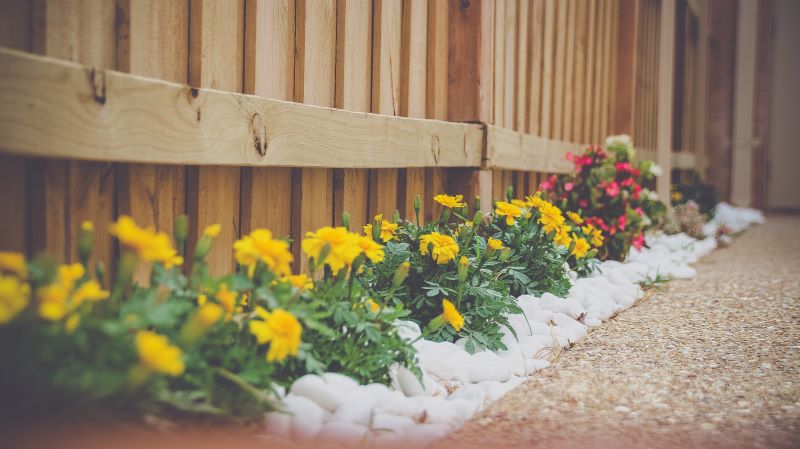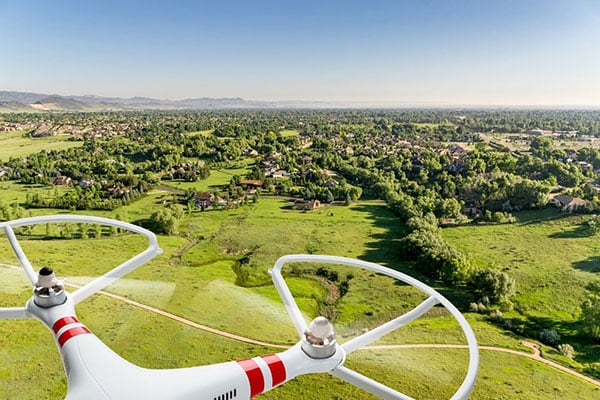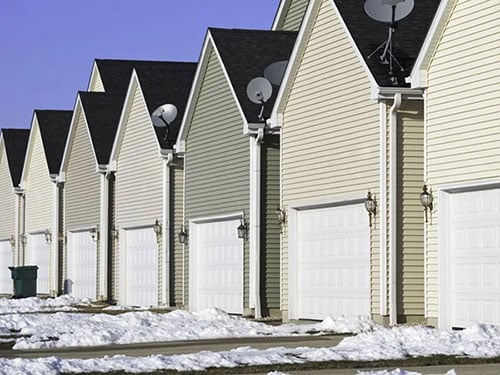Many communities love to use grass as part of their landscaping as it provides green space, is excellent for the environment, and allows residents to enjoy outdoor space in their communities. It provides a place for kids to play and dogs to run and roam free. However, using grass extensively in your community's landscape can also come with some drawbacks.
Some of these drawbacks may include increased water usage due to watering the grass consistently, the cost of lawn maintenance, having to mow the lawn regularly, and more. Sometimes, the maintenance grass takes can be more trouble than it's worth.
Many associations are beginning to notice the high costs of maintaining a grass-centric landscape, and some are looking for alternatives to using grass as one of their main landscaping tools.
The following are great alternatives that associations are using to help avoid using grass in their landscaping:
Edible Bedding Approach
One of the best ideas that your community could probably adopt is the "edible bed approach". If you live in a warm climate with long growing seasons and can get the community behind it, the edible bedding approach could be a huge hit within your community.
Edible beds are giant beds of mulch or dirt that are planted with edible crops that your community can harvest. It's a great way to promote healthy eating, whether you choose to let people in the community take home vegetables or herbs to cook with or you wish to donate the food to a local food pantry, soup kitchen, or other charity.
Many herbs like lemongrass, parsley, dill, cilantro, and more like to grow in big flower beds. In fact, they thrive under these conditions! This approach allows you to use your land to grow food for humans to eat while promoting a healthy lifestyle within your community.
Hard Landscaping Approach
Hard Landscaping includes making your landscape include lots of hard surfaces that are paved with concrete or other hard materials. The following are great examples of "hard landscaping" that many associations turn to as they eliminate the amount of grass their community needs:
- Athletic courts (tennis, basketball, etc.)
- Firepits/outdoor fireplaces
- Outdoor kitchens
- Patios (perfect for dining)
- Pools
- Ponds or other water features
- Walkways
Hardscaping will give your residents access to more amenities, while also cutting down on the amount of grass that you need to plant within your community. These are both great, long-term benefits.
Mulch & Bark
Using mulch and/or bark shavings for your landscaping may seem a bit unusual, but it will provide an elegant and sophisticated look for your community's landscape.
Mulch is relatively low-cost compared to many other alternatives and can give your community a well-kept appearance without breaking the association's budget.
These savings in association spending are passed on to homeowners, which is always appreciated when you can keep fees from going up every year.
Adding some colorful flowers or shrubbery to the landscape against the darker colors of mulch and bark makes the community look even more beautiful.
Rocks
Rocks may not be the first thing to come to mind when you are thinking of alternatives to grass for your community.
Many Japanese communities have practiced the sophisticated looks of rock gardening for hundreds of years.
The practice has slowly spread worldwide, including the influence it does not have on many communities throughout the United States.
Rocks will demand zero maintenance, and once they are placed on the property, they will last for years.
The only places where you should avoid rocks are places like playgrounds where kids spend a lot of time, as falling on them can hurt and lead to scrapes, cuts, and injuries. Rocks are another great choice for dry communities that experience a lack of rainfall, as rocks do not need rain to keep them looking their best.
Sand
Many communities that are in areas that experience high levels of drought and very dry weather often turn to sand to fill their common spaces rather than grass.
Sand does not require water to maintain it, which saves the association money and helps the environment. You may have to lay more sand every few years when the supply runs thin; otherwise, sand has very few downsides as it is a low-maintenance alternative to grass.
Keep Your Community Looking Its Best
If you've grown sick and tired of managing the costs of mowing, trimming, weed whacking, and blowing. These are some great alternatives to keeping grass as the main part of your community's landscape.
You will also enjoy benefits like saving water and not paying as much for landscaping maintenance while still providing your residents with a beautiful-looking community that allows them to enjoy the money they put into their neighborhood to keep it looking beautiful.





